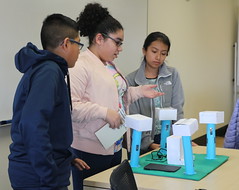
- Click Here To Find Out More About:
- Music School Melbourne Kids
Submitted by: Donald Pang
Contrary to popular belief, getting a job as a graphic designer is not hard. Even in times of economic recession! There will always be companies looking out to sharpen their public image with fantastic designs. And that is where you as a graphic designer will step in and do your magic on their marketing campaigns.
There are always employment opportunities for a graphic designer. As long as you live in a modern city that has a brand name to almost every product from mineral water to MP3 players. The companies of these products will be one of the major reasons why the graphic designer s job exists. These companies are clients of advertising companies and allow designers to draw a salary of $40,000 – 60,000 annually.
Graphic designers start their day by stepping into their company s studio. Then, they take a seat at their desk full of sketches, final artwork, references and other materials. After switching on their computer, they log on, check their mail and their day officially begins.
From here on, the graphic designer will experience the following sequences, usually in chronological order:
Part 1: Receive a job brief from an account servicing colleague
Accounts in advertising are not to be confused with accounting where an accountant tabulates figures. In this industry, accounts refer to clients. And an account executive will take down what a client needs and pass instructions to the creative team.
The creative team will usually receive the following reference materials:
– Soft and hard copies of old ads the clients used to run.
– Images and corporate guidelines.
– In some companies, account executive will collect samples of ads that the client wants their ad to look like.
Part 2: Brainstorm on possible design treatment with your team
Depending on the scale of your project, you will either work with a team or alone. Team members are selected based on ability to carry out the project best. In the case where key people are busy, your team members will be selected upon availability of time. So it is important for all designers be capable of a bit of everything from illustration to packaging design.
This is usually the fun part. Everyone shares their views on how best to present the product to the public. Group discussions are usually carried out only when there are big projects like branding campaigns or million-dollar account pitches.
At this point, be prepared to sketch out your ideas to share. It does not have to be perfect, but your pencil works have to be reasonably proportionate and understandable.
Part 3: Complete the artwork, have it approved, and send to account executive
Finishing the artwork can be tough when it involves translating written and verbal messages into a visual art form. But it is something you will get used to with experience. Once your artwork is completed, you will pass it around to the art director to have your work approved. If the art director decides that your work meets professional standards and the client s wants, the artwork gets sent to the F.A (Final Artwork) Artist who will check your works and send it for printing.
Part 4: Complete revisions (If any)
Sometimes a client will want changes to the artwork. And it will be sent back to you for a few revisions like text changes or image replacements. In the case where your artwork failed client expectations, you will have to redo it.
Once revisions are complete and the client accepts and publishes your work, congratulations! You have completed a project!
Advertising agencies look out for graphic designers who:
– have versatile style and can work on projects from skincare to motor vehicles.
– can communicate ideas efficiently and effectively.
– can work proficiently with Adobe programs like Illustrator, Photoshop and InDesign.
– have an eye for details.
– can keep tight deadlines.
If you are fresh out from high school and have ambitions to be a graphic designer one day, go for it! Look out for good graphic design schools because there you will learn how to create professional-level artwork. A good school can equip you with the abilities of a successful designer in 2-3 years. Ultimately, this increases your chances of being employed in times of economic turmoil.
About the Author: Donald Pang is an International Admissions Director at Raffles Education Corporation. It operates 38
graphic design schools
in 14 countries; Kuala Lumpur in Malaysia, Manila in Philippines, Singapore, Sydney in Australia, Auckland in New Zealand, India (Mumbai, New Delhi, Bangalore), Colombo in Sri Lanka, Dhaka in Bangladesh, Hong Kong, China, Vietnam (Hanoi, HCM), Bangkok in Thailand, Jakarta in Indonesia and Cambodia
Source:
isnare.com
Permanent Link:
isnare.com/?aid=901812&ca=Education